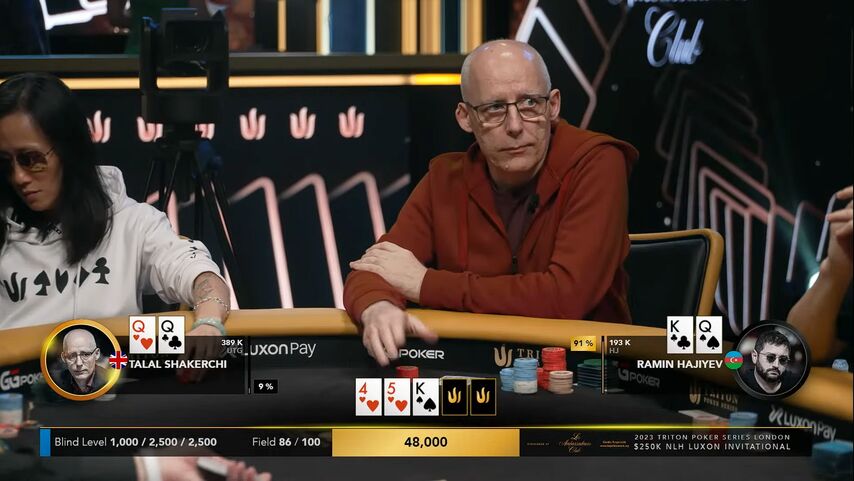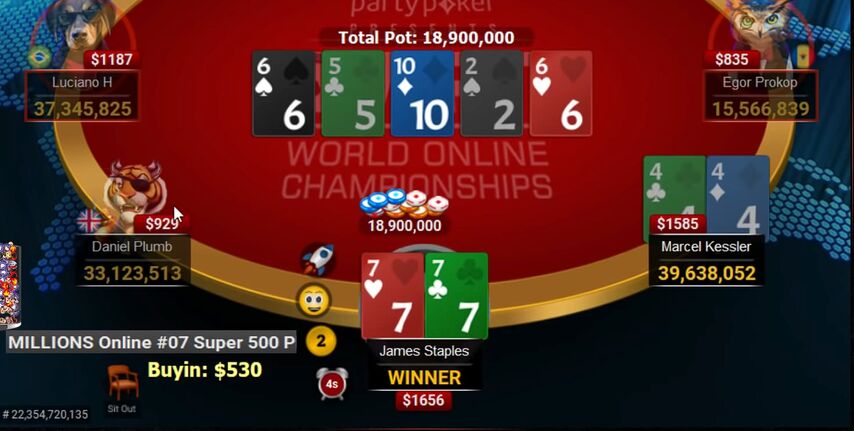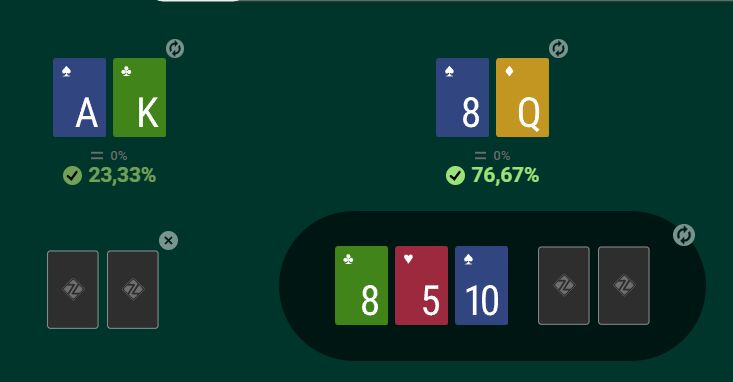What is a overcard in poker? The question sounds simple, but there is more to overcards than you might know.
Overcards happen in two different ways:
- The community cards (flop, turn, and river) have one or more cards that are higher than your pair. (Example: You have J J and there is a King on the flop. That is one overcard, but these are sometimes called “scare cards” for certain hands.
- You have overcards in your hand, meaning the community cards are lower than your cards.
Overcards on the board can make our pairs vulnerable, but when we hold overcards, we can out-draw our opponents and make higher pairs.
This article is going to explain both forms of overcards. We’ll explain what to do when your pair is threatened by overcards and also how to use an overcard in your hand.

Overcard on The Board: What Should You Do?
When we have a pocket pair like 9-9, it’s never a good feeling to see overcards on the board. If one of your opponents made a pair with that overcard, you could lose the hand.
This is one reason that players are sometimes nervous about playing pocket Jacks. Since it is a premium pocket pair, players usually like to make raises or 3-bets, building a large pot. The range of hands that opponents will continue with includes lots of A-K, A-Q, A-J, A-10, and other hands with overcards. When there is a Queen, King, or Ace on the board, you might be behind.
So what can you do when there is an overcard to your pocket pair?
It’s normal to feel nervous when you see a card that is ranked higher than your pocket pair. There is a chance you are behind, but that is not guaranteed.
Don’t assume that every time you see an overcard you are behind. Some inexperienced players feel that they must fold if there is an overcard to their pocket pair, but that isn’t always the case.
But how will you know?
Understanding ranges in poker will help you decide which situations to be worried about. With a clear understanding of how often your opponent makes pairs with these overcards, you can make better decisions.
Having additional draws with your pocket pair, like a flush or straight draws, can make you lean towards a call, even when there are overcards on the board.
For example, let’s take a look at this hand from Jamie Staples on partypoker.

Here we can see that 7♥ 7♣ is threatened by the 10♦ on the board. Jamie makes a bet on the turn, which is raised by his opponent in the UTG position (Marcel Kessler).
This is when most players would fold, but because Jamie understands poker ranges, he had a plan.
He said that “Marcel has a lot of one-pair hands in this spot” and “My range looks really weak here”, indicating that the player might be raising with a bluff or semi-bluff. He also didn't think Marcel Kessler could have 3-4 and liked seeing the 2♠ turn card.
He was worried about 8-8 and 9-9, but thought that players might go all-in preflop with these hands.

Instead of folding to the bet, Jamie Staples was able to win a healthy pot against his opponent, who showed 4♣ 4♦ after the river.
He went on to win the Millions Online $500K GTD and add almost $60,000 to his bankroll. The buy-in for this tournament was $530, but there are tons of smaller events with similar overlays on partypoker.
How to Use Overcards in Your Hand
If your cards are higher than the cards on the board, you’ve got overcards.
Having overcards on the flop can help you make higher pairs, meaning you’ll want to hit your pair on the turn or river. Having a pair with one of your cards, but also holding an overcard, can be a strong hand to have. This makes it possible to improve to a strong two-pair.
This example from our Odds Calculator Tool is just one combination of hands, but it shows you the power of overcards. Even though A K does not have any pair and the only draw available is a backdoor straight draw, it still has 23% to win.

You should use this tool whenever you are curious about certain matchups or possibilities.
Having overcards can also help your semi-bluffs. What happens if you raise with A J but completely miss the flop and only have overcards?
If you are in position and against a single opponent, you can choose to continuation bet with your overcards. You have the chance to make higher pairs on future streets, but also some fold equity against your out-of-position opponent.
Of course, this all depends on ranges, which you need to study to be a competitive poker player.
Sometimes you are out of position with overcards facing a bet. Do your overcards give you any additional outs, like straight or flush draws? Consider your total number of outs, including your overpairs and draw outs.
Final Words About Overcards
There’s no concrete strategy that will work every time for playing overcards.
Consider how overcards can help your hand or hurt your hand.
- If your hand is threatened by overcards, understanding ranges is your solution.
- If you hold overcards, consider your outs, and don’t make loose calls to hit pairs.
If you want to gain some real-world experience and deal with these overcard situations better, we recommend playing low-stakes online poker. Choose stakes you are comfortable with and pay close attention to spots involving overcards.
Most importantly, start learning more about ranges. If you understand ranges, you will be able to navigate overcards with much more clarity.




















